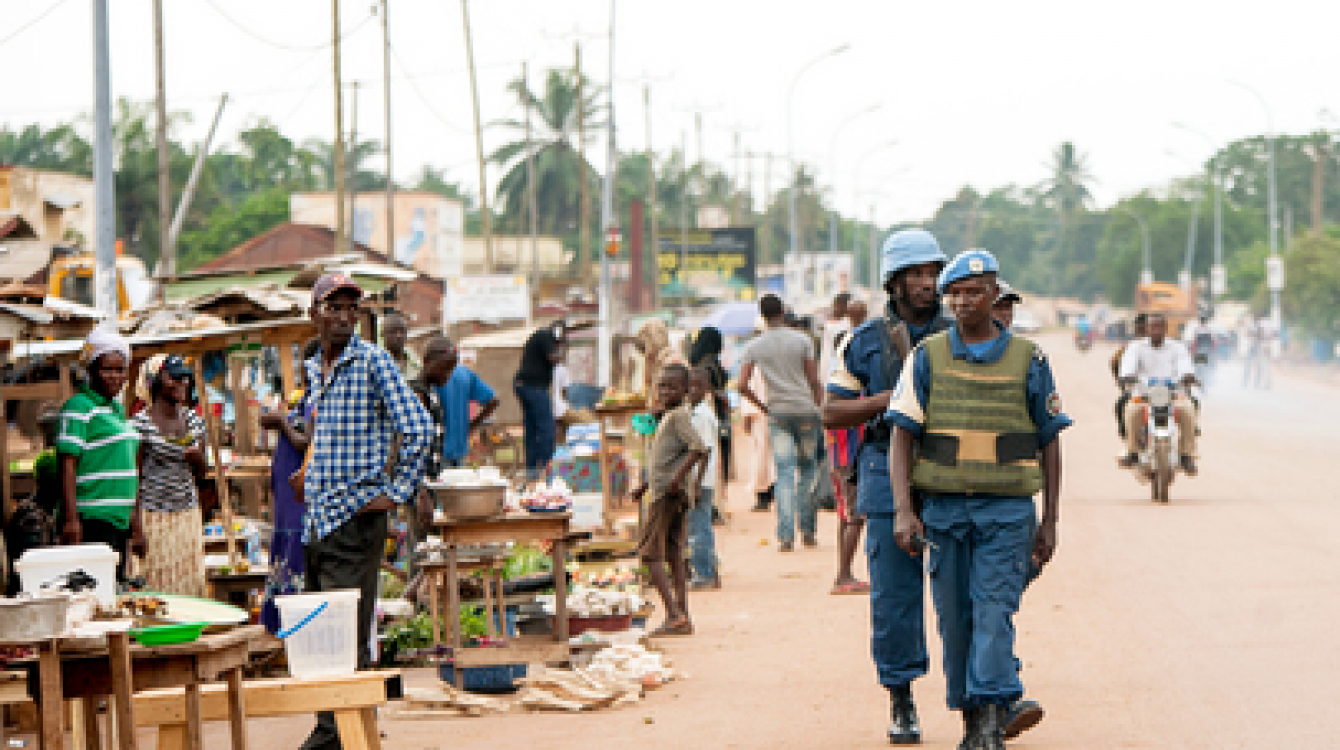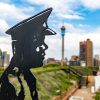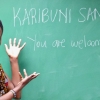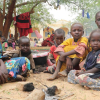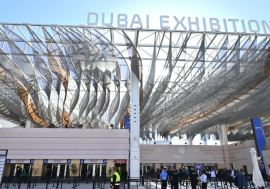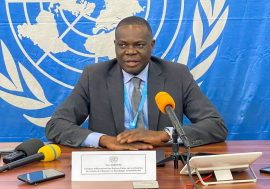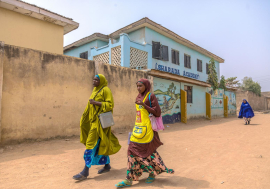Central African Republic: the challenge of stabilization
Central African Republic: the challenge of stabilization
In armored vehicles and helicopters, forces of the United Nations Mission in the Central African Republic (MINUSCA) entered Bocaranga on 7 October to free the city from the grips of one of the many armed groups operating in the country, the “Retour, Réclamation et Réhabilitation” or 3Rs.
Located in the north-west of the country and a major center for transhumance, Bocaranga had been invaded two weeks earlier by the 3Rs.
A few days after the 3Rs lost Bocaranga, there was serious violence in the southeastern cities of Kembé and Pombolo, affecting many Muslims. The UN peacekeepers are now expected to assess the situation in those cities. Government officials and other MINUSCA personnel will also travel at a later stage to investigate the situation.
These new hotbeds of tension remind one of the July bloody scenes in Bangassou and Zemio. After the withdrawal of US and Ugandan troops, both town towns have since been occupied by armed groups.
The CAR is a country of 622,984 km², with a large chunk of its territory occupied by over 15 armed groups, including the Séléka and anti-Balaka – two groups whose opposition to the previous government pressured ex-President Jean François Bozizé to leave the country in 2013. But there are also the Peuls, a semi-nomadic and pastoral ethnic group, and other self-defense groups.
All the factions claim to defend legitimate interests. The coalition Patriotic Central African Movement and the Popular Front for the Renaissance of the Central African Republic, control parts of the North; the Central African Peace Unit had operated in Bambari, about 400 km east of Bangui, the capital, before the UN peacekeepers dislodged them last February to the south of the city, as part of the disarmament process.
A conflict with consequences
Whatever their demands, these armed groups have the same modus operandi: "Attack civilians, targeted killings, wounds, rapes and kidnappings," states MINUSCA, in its latest report on abuses and violations of human rights and international humanitarian law.
The report focuses on the activities of the FPRC and UPC coalition in the Haute-Kotto and Ouaka prefectures, in the south-east and north-west of the country, between November 2016 and February 2017. In both cities houses were burned and bridges and roads destroyed.
Armed groups also occupy schools and other public buildings, and regularly steal food from villagers, humanitarian cargoes and commercial convoys. But their predominant activity remains the illegal exploitation of the country's natural resources. Some of the groups offer security services to foreign mining companies and others engage in coffee business.
The peacekeepers, in collaboration with the government security forces, are trying to put an end to the violence and protect the civilian population. Despite ongoing rehabilitation works by MINUSCA engineering units, the deplorable state of roads (only the Beloko-Bangui axis, the country's main supply route, and Bangui-Sibut are asphalted) makes it nearly impossible to move on land, especially in the rainy season.
So, to protect civilians and institutions, peacekeepers often rely on air assets, including helicopters.
The activities of the armed groups also hinder the delivery of humanitarian aid to the population. Aid personnel are often forced to flee into the bush or neighboring towns, sometimes taking refuge in churches, mosques or nearby areas where MINUSCA peacekeepers are deployed.
There are currently about 600,250 internally displaced persons in CAR. State authority is still embryonic and economic activity is very low-key. Repeated attacks on convoys carrying goods have severely affected imports. Currently, commercial convoys have to be secured by UN peacekeepers on the main highways and other secondary routes in order for goods to reach the rest of the country.
Ending the suffering
Not long ago, Parfait Onanga-Anyanga, the Special Representative of the UN Secretary-General, MINUSCA, partnered with the government and civil society to initiate a Peace Caravan, visiting several cities in the Southeast to express solidarity with the people.
There is also a need to establish humanitarian corridors to help the affected populations, especially after the temporary withdrawal of some humanitarian organisations. The Peace Caravan also helped create the right conditions for a joint deployment of security forces.
During numerous field visits, including with the CAR Head of State, the leadership of MINUSCA advocated for dialogue, peace and social cohesion, insisting that, "there can be no violent solution to the Central African crisis." The UN Mission, which has more than 12,300 peacekeepers, indicated it would strive to ensure the protection of civilian populations and not hesitate to use force to prevent armed groups from attacking innocent people.
Experts have argued that the current situation requires an increase in MINUSCA’s force to enable the Mission and the Central African defense and security forces to provide adequate security for the country. The European Union and other partners are already helping in capacity building of the security forces.
Government priorities
Since the return to constitutional order after the 2015 general elections, the government seems to have made progress in restoring state authority.
On the sidelines of the 72nd UN General Assembly in New York last September, President Faustin Archange Touadera told partners: “The dialogue with the armed groups and the launch of the pilot project of disarmament, demobilization, reintegration and repatriation (DDRR) have been implemented in Bambari and Bangui, Bouar, Paoua and Kaga Bandoro. But we must also mention the adoption of the national strategy of restoration of state authority, the National Security Policy and the National Security Sector Reform Strategy.”
In principle, armed groups have largely accepted the Head of State’s invitation for dialogue, which came through the DDDR Monitoring Advisory Committee. Nevertheless, the situation on the ground is still precarious. Many believe that the June 2017 Sant 'Egidio Agreement, also known as the Political Agreement for Peace in CAR, which emphasizes the need for a ceasefire, is the ideal framework for a peaceful resolution of the crisis.
Although the warring parties accepted the ceasefire agreement, many parts of the country are still under armed violence. Four months after the agreement, the groups continue to rebuff appeals by the government, religious leaders, sub-regional and international organizations to give peace a chance. They continue to disobey laws and commit atrocities against fellow citizens, raising fears of a conflagration of the conflict.
Ms. Uwolowulakana Ikavi-Gbetanou is the Head of the Publications and Multimedia Unit in the office of Strategic Communications and Public Information at MINUSCA.


